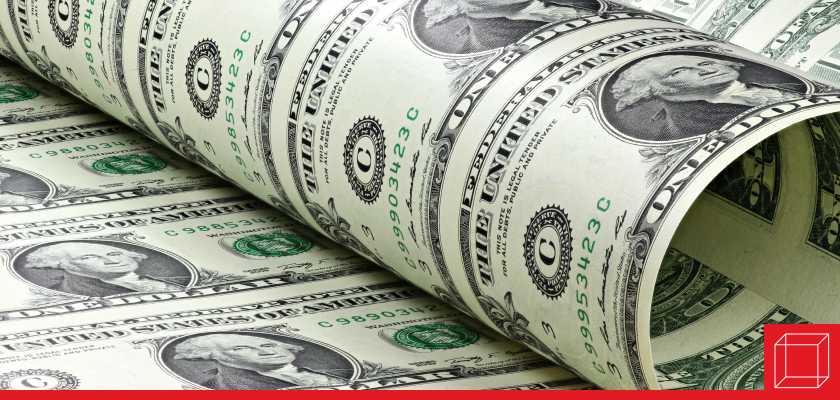Understanding the U.S. Credit Downgrade
Moody's Downgrades U.S. Credit: What It Means for the Economy and Your Wallet

In May 2025, Moody’s became the third major credit rating agency to downgrade the United States from its coveted AAA rating, joining S&P (2011) and Fitch (2023). While this may seem symbolic, credit ratings carry real-world consequences. The U.S. downgrade offers a live case study that blends concepts from money and banking, macroeconomics, and financial markets. We’ll explain what a credit downgrade means, how it affects banks and markets, and why rising debt levels are becoming harder to ignore. To put this issue into perspective, the St. Louis Federal Reserve Economic Data shows that in 2020, interest payments on U.S. debt were $514.7 billion and by the first quarter of 2025, interest payments were $1.114 trillion, almost a 100 percent increase.
What Is a Credit Rating and Why Does It Matter?
A credit rating is an evaluation of an entity’s ability to meet its debt obligations, issued by agencies like Moody’s, S&P Global, and Fitch. Credit ratings are assigned in tiers, with AAA (Aaa) representing the highest level of creditworthiness, followed by AA+ (or Aa1), AA (Aa2), and AA− (Aa3), each step down indicating a slightly higher perceived risk of default and typically requiring higher interest rates to attract investors. Ratings affect the interest rate, or yield, a borrower must pay. Lower ratings mean higher perceived risk, which leads to higher interest costs.
For U.S. Treasuries, which are typically considered “risk-free” assets, the downgrade doesn’t mean default is likely. But it does mean investors are starting to doubt how sustainable is the country’s long-term fiscal path.
Moody’s Downgrades the U.S. Credit Rating
In its downgrade, Moody’s cited America's ballooning national debt, now surpassing $36 trillion, and rising interest payments. The downgrade reflects skepticism about whether the U.S. will rein in its budget deficits. The agency warned that bipartisan failures to implement credible fiscal reforms are weakening the government’s ability to support its financial obligations.
Even during global crises like World War II, the 2008 financial crisis deficits surged but were later corrected. Today, however, deficits are climbing even in non-crisis periods, projected to hit 9% of GDP within a decade if current policies continue.
How Credit Downgrades Affect Banks and Interest Rates
Moody’s also downgraded the long-term ratings of top banks like JPMorgan Chase, Bank of America, and Wells Fargo because banks hold significant amounts of U.S. government debt. If Treasuries are considered slightly riskier, the institutions that rely on them are too. This typically leads to higher funding costs for banks, increased capital requirements, and greater market volatility in bank stocks. Ultimately, downgrades ripple through the financial system.
When a credit rating falls, investors demand more return for the perceived risk. That pushes up interest rates on newly issued debt. Higher rates raise borrowing costs for the government, which must issue more debt to pay for existing obligations, creating a vicious cycle. This also impacts households, as mortgage, car loan, and credit card rates climb. Businesses face more expensive financing for new projects. Financial markets may see more volatility as bond yields increase and equity values fluctuate.
Do Credit Ratings Really Change Investor Behavior?
Yes and no. For most institutional investors, U.S. government debt is a unique asset. It remains highly liquid, backed by the world’s largest economy, and denominated in the world’s reserve currency. Regulatory frameworks treat it as inherently safe, regardless of what the rating says.
However, sentiment matters. Some investors do exit when ratings fall, not because they must, but because downgrades act as signals that it's time to reassess risk. When many investors act on this signal at once, volatility increases.
The U.S. Debt Problem
Political gridlock and short-term incentives make debt reform difficult. Lawmakers often prefer to use “temporary” tax cuts that are politically popular but fiscally expensive. They also rely on accounting tricks to make budgets appear balanced and avoid tackling entitlement reform, especially Social Security and Medicare. Even when voters express concern over the debt, polling shows most don't understand what drives it, making meaningful reform politically risky.
Moody’s downgrade is a warning. According to St. Louis Federal Reserve Economic Data, in the first quarter of 2025, interest payments on U.S. Treasury debt accounted for 34% of U.S. tax revenue, leaving 66% available to pay for essential services, invest in infrastructure, or respond to crises. If borrowing costs continue to rise, debt becomes more expensive to maintain and takes a larger share of the U.S. budget. In the short term, volatility may increase. In the long term, it may take a crisis to force meaningful fiscal reform. Until then, markets and students, should pay close attention to how America's credit story unfolds.
In the Classroom
This article can be used to discuss the economy (Chapter 1: The Dynamics of Business and Economics) and the U.S. financial system (Chapter 15: Money and the Financial System).
Discussion Questions
- Why did Moody’s downgrade the U.S. credit rating?
- Do you think this problem will affect consumer behavior? Why or why not?
- How does a downgrade in U.S. government debt affect major banks like JPMorgan and Bank of America?
- How do high or low interest rates affect the U.S. deficit?
- What challenges make it difficult for Congress to address rising federal debt?
This article was developed with the support of Kelsey Reddick for and under the direction of O.C. Ferrell, Linda Ferrell, and Geoff Hirt.
Jaiveer Singh Shekhawat, "Moody’s Downgrades JPM, BofA and Wells Fargo After US Credit Rating Cut," Reuters, May 19, 2025, https://www.reuters.com/markets/us/moodys-downgrades-jpm-bofa-wells-fargo-after-us-credit-rating-cut-2025-05-19/
Jonathan Levin, "Moody’s Market Jolt Will Leave Its Mark," Bloomberg, May 19, 2025, https://www.bloomberg.com/opinion/articles/2025-05-19/moody-s-downgrade-will-leave-its-mark-on-markets
Matt Levine, "US Debt Rates Itself," Bloomberg, May 19, 2025, https://www.bloomberg.com/opinion/newsletters/2025-05-19/us-debt-rates-itself
Rebecca Patterson, "America’s Debt Is Officially Tarnished. Here’s What Must Happen Next," The New York Times, May 19, 2025, https://www.nytimes.com/2025/05/19/opinion/moodys-downgrade.html



